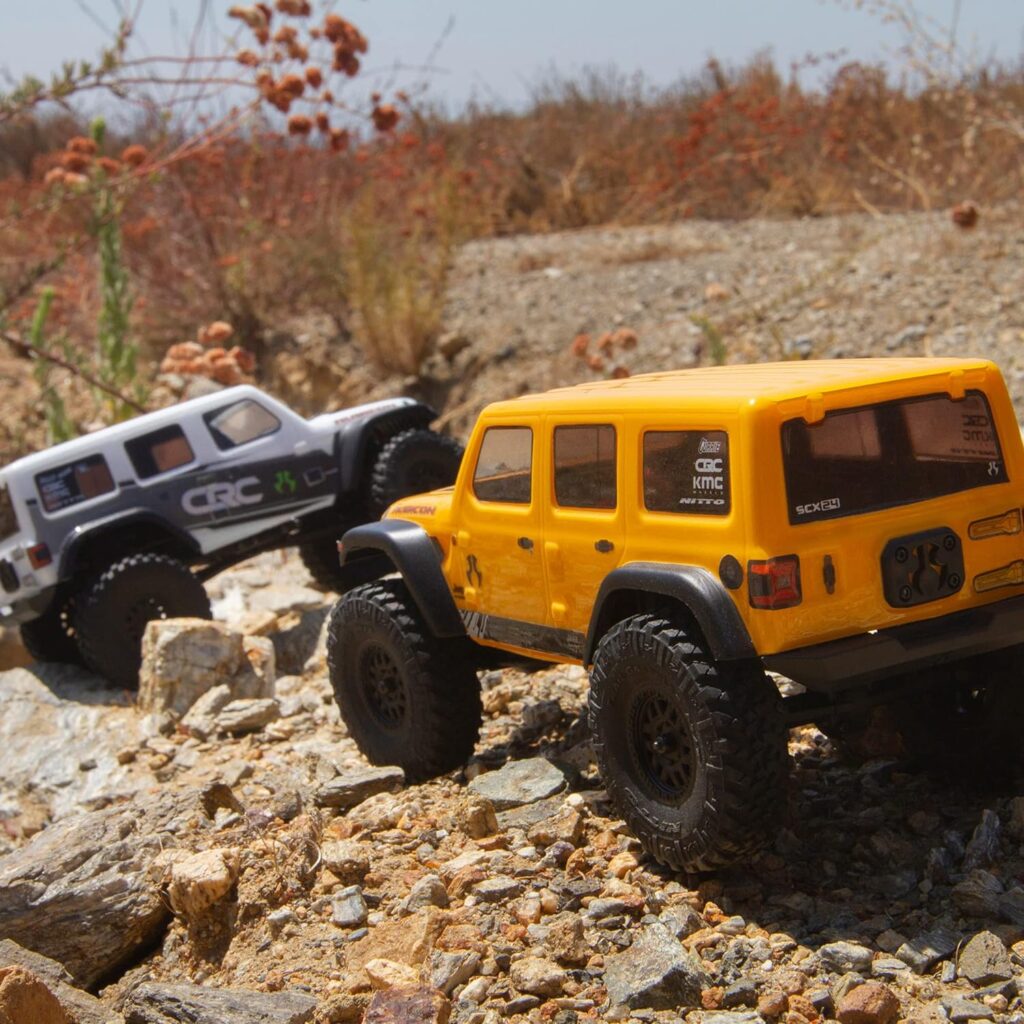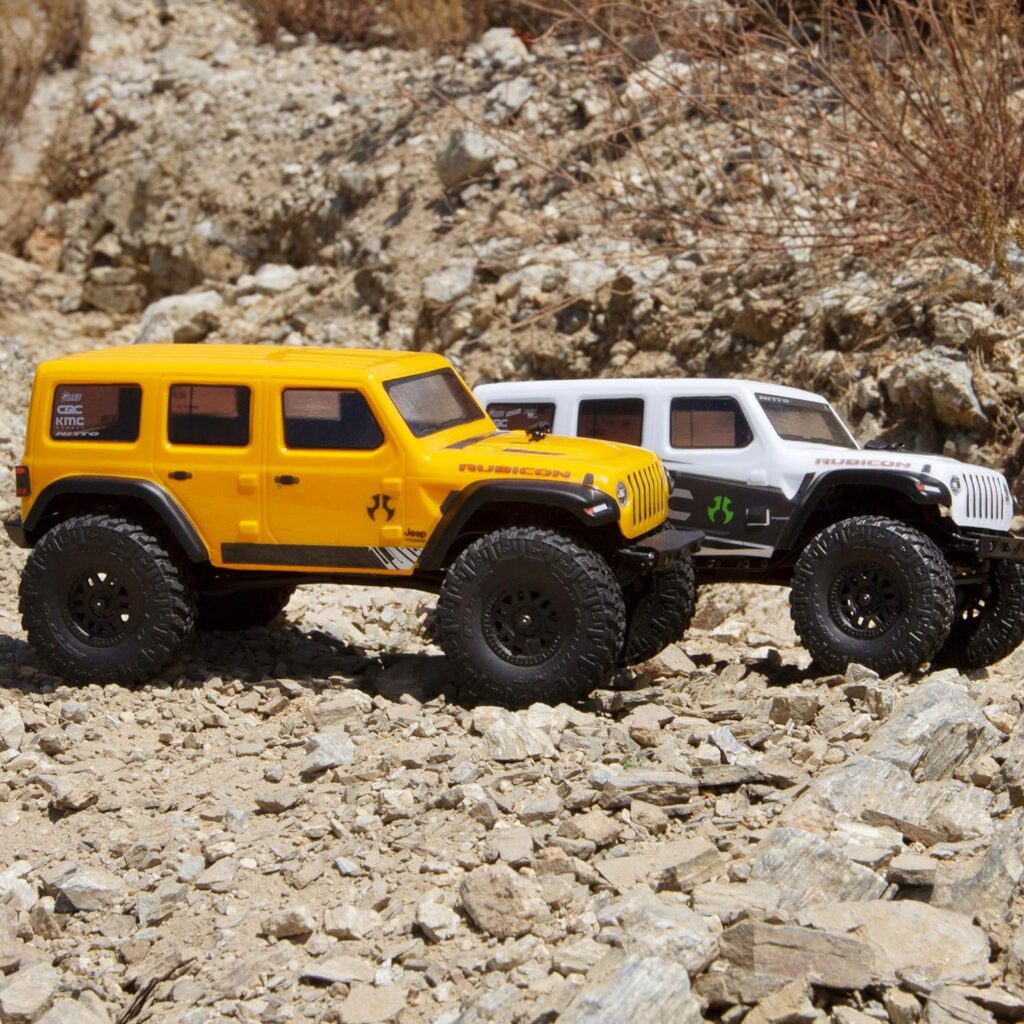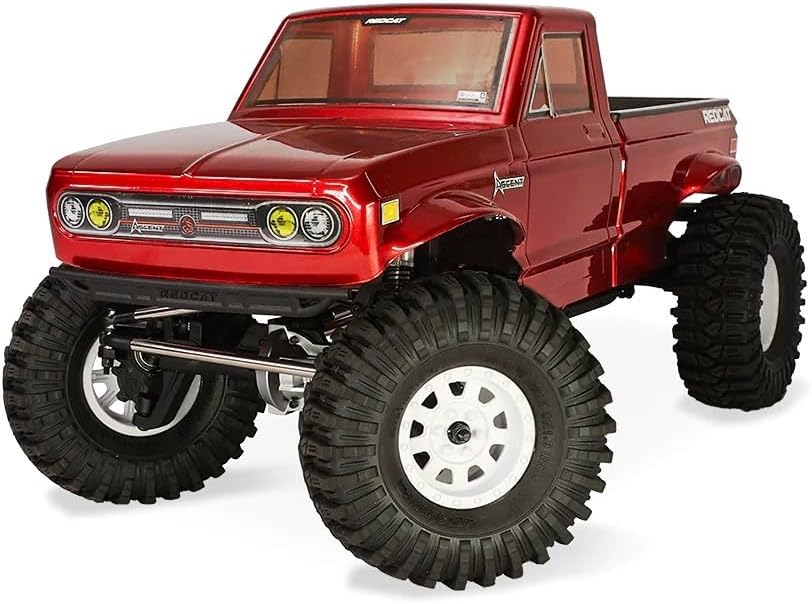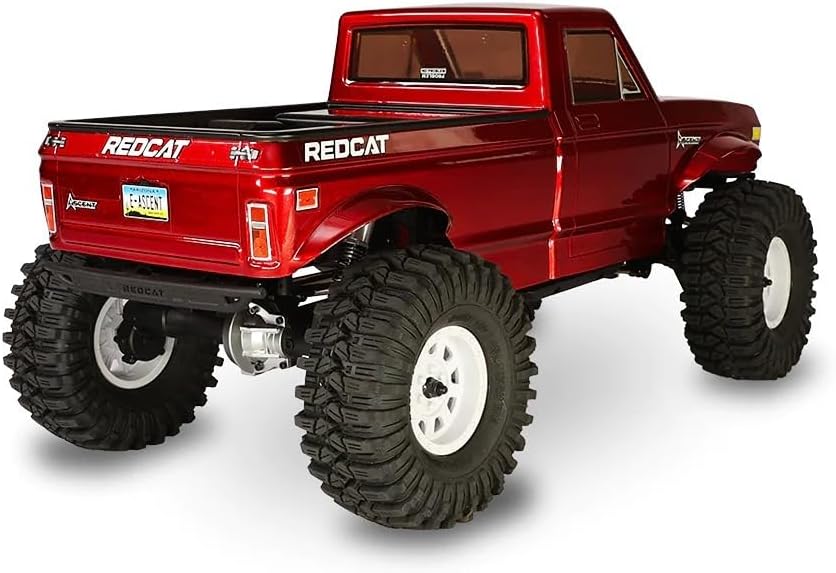RC crawling has exploded in popularity over the last decade as a fun, engaging hobby for all ages. These uniquely capable, highly detailed toy trucks provide enjoyable technical challenges as they tackle rocks, mountains, and harsh terrain in miniature. This blog will explore the different types of RC crawlers, the key components that make them work, how to get started, and the reasons this hobby is so addictive. Whether you are new to RC crawlers or a seasoned veteran, you’ll learn what makes these machines such a great creative outlet.
Definition of an RC crawler

An RC crawler is a type of remote controlled off-road vehicle that is designed for slow, technical driving over challenging terrain. Unlike fast RC cars and trucks, crawlers are built for maximum torque and precise maneuvering capabilities. They allow drivers to traverse obstacles like large rocks, steep inclines, and muddy pits.
Brief history of RC crawlers
RC crawlers first emerged in the late 1990s as enthusiasts began modifying existing hobby-grade RC trucks into slower, more capable rigs. These early “comp crawlers” were focused on competition and extreme terrain driving. Over the 2000s, scale RC crawlers gained popularity as companies started producing highly detailed truck bodies and chassis with realistic 4×4 suspension designs. The scale crawler segment allowed hobbyists to replicate real off-road trucks in miniature.
Popularity and growth of the RC crawler hobby
In recent years, RC crawling has experience immense growth as both a hobby and competitive scene. Companies offer a diverse range of ready-to-run and kit options. The realistic look and technical challenges of navigating obstacles has drawn many enthusiasts to start collecting and hitting the trails with scale crawlers. Competitions and events are also popular ways for crawling hobbyists to test their rigs and driving skills against others. RC crawlers offer both the joy of building and driving your own unique rig.
Types of RC Crawlers

1. Scale crawlers
Scale crawlers aim to replicate real-life off-road vehicles like trucks, SUVs, and jeeps at miniature scales like 1/10 or 1/8. They have highly detailed body shells and chassis with realistic suspension designs and accessories. Scale crawlers allow hobbyists to own miniaturized versions of iconic off-road rigs from brands like Jeep, Toyota, Land Rover, and Mercedes. They provide the most realistic crawling experience.
2. Trail crawlers
Trail crawlers are designed for driving on natural obstacles and challenging terrain. They emphasize function over scale looks, using rugged chassis and large tires optimized for traction and articulation. Trail crawlers are extremely capable for technical climbs, rocks, and muddy trails. They make excellent rigs for dedicated off-road driving.
3. Competition crawlers
Competition crawlers are performance-tuned machines made for crawling competitions and contests. They use specialized components like high-torque motors, aluminum chassis, and adjustable shocks. Competition crawlers are the pinnacle of RC crawling technology, built for maximum drivability. Events offer challenges to test their skills against other drivers.
4. Rock crawlers
Rock crawlers are a subtype of trail crawler optimized for the most extreme boulder and rock terrain. They maximize ground clearance with tall suspension links and have immense articulation capabilities. Rock bouncing competitions involve driving over larger rocks and obstacles. Rock crawlers allow traversing intensely rugged spots that would stop most other RC vehicles.
Key Components of an RC Crawler
1. Chassis and body
The chassis provides the structural foundation of a crawler. It houses all the electronics and drivetrain components. Materials like aluminum, steel, and plastic are used. The body gives the crawler its scale appearance. It mounts to the chassis and is usually made of lightweight polycarbonate plastic.
2. Motors and ESC
Brushed or brushless motors provide power. They are paired with an electronic speed control (ESC) to regulate throttle input. Low turn motors offer maximum torque and slow speed needed for crawling. Sensored brushless motors are popular for competition rigs.
3. Radio and receiver
A 2.4GHz hobby radio system allows remote control of the crawler. The transmitter is handheld, while the receiver is installed in the crawler and paired to the transmitter. It sends signals to the ESC and servo.
4. Steering servo
The steering servo actuates the front wheels to turn left or right. High torque, metal gear servos ensure precise steering control. Dual servo setups are common for maximum steering response.
5. Suspension and wheels
Independent front and rear suspension provides articulation over obstacles. Coil or leaf spring suspension designs are realistic. Large 1.9-2.2” diameter wheels and front/rear differentials optimize traction.
6. Battery and charger
Lithium polymer (LiPo) batteries power most crawlers. Higher capacity batteries allow longer run times. A compatible multi-chemistry charger is required to safely recharge LiPo packs.
Getting Started with RC Crawling

1. Buying a ready-to-run vs building a kit
Ready-to-run (RTR) crawlers are pre-assembled and ready to drive. Kits require full assembly but allow customization. RTRs are quicker, while kits teach technical skills.
2. Finding good crawling spots
Ideal spots have dirt, rock, wooded, and hilly terrain. Local parks, hiking trails, mountains, open fields and your own backyard can offer great crawling spots.
3. Joining RC crawler clubs and events
Clubs and organized events are a great way to meet fellow hobbyists and run your crawler. Competition events allow friendly competition on difficult courses.
4. Upgrading and modding an RC crawler
Many enthusiasts enjoy customizing their crawlers with aftermarket parts like metal chassis, lift kits, tires, tunable shocks, light bars and more.
Why RC Crawling is Fun

1. Technical driving challenges
Navigating tough terrain and obstacles is an engaging test of driving skill. Crawlers offer the challenge of picking optimal lines through courses.
2. Realistic scale details
For enthusiasts who love off-road trucks, owning miniature replicas with realistic details provides modeling enjoyment.
3. Tinkering and customization
The ability to build, upgrade, and modify crawlers appeals to the tinkering aspect many hobbyists enjoy.
4. Social aspect of clubs and events
The crawling community provides a fun, inclusive space to share knowledge and experiences. Events and clubs enable meeting fellow enthusiasts.
Frequently Asked Questions about RC crawlers
1. What is an RC crawler?
An RC crawler is a type of radio controlled off-road vehicle that is designed for low speed technical driving over challenging terrain and obstacles. Unlike fast RC cars, they are optimized for torque, articulation and control rather than speed.
2. How fast do RC crawlers go?
Most RC crawlers have a top speed of 3-5 mph. Their low speed allows them to carefully traverse rocks, scale steep inclines, and maneuver precise lines through difficult courses. Competition crawlers can reach up to 10 mph.
3. What are the different types of RC crawlers?
Common types include scale/trail crawlers for realism and off-road recreation, competition-oriented rock racers and rock bouncers, and high-performance comp crawlers built for contests. There are also short course crawlers for racing and monster trucks for big jumps.
4. How do RC crawlers work?
RC crawlers use a hobby-grade radio system for remote control. A transmitter controls a receiver in the crawler that relays signals to the electronic speed control, steering servo, and other components. They are powered by lithium polymer batteries.
5. What features make a good RC crawler?
Key features include 4-wheel drive, 4-link suspension, locked differentials, a low turn count motors, high torque steering servo, quality tires with foam inserts, and a waterproof receiver box. Scale realism and upgradeability are also important.
6. How much does an RC crawler cost?
Entry-level ready-to-run RC crawlers cost $100-$300. High-end competition crawlers can cost over $1000. Kit builds allow buying components separately for customization. Expect to spend $300-$600 for a capable kit.
7. How long does the battery last?
Run time depends on the capacity of the LiPo battery pack. Low speed crawling can extend run times. In moderate use, expect 30-90 minutes per charge. Carrying spare battery packs extends driving time.
8. Where is the best place to run an RC crawler?
Look for hiking trails, rocky terrain, hills, mud, wooded areas and hidden gems in your area. Many RC crawler clubs hold events at cool local spots. Your own backyard can even provide a fun mini crawling course.
9. What maintenance do RC crawlers require?
Check for loose screws, clean dirt/debris from chassis, lubricate parts with silicone oil, replace worn parts like steering linkages when needed. Avoid water damage by sealing electronics. Check tire treads and battery health.
10. How can I get started with RC crawling?
Read RC blogs and magazines to get product knowledge. Join local RC crawling clubs and attend events to gain hands-on experience. Start with an ready-to-run model for quick entry or a kit for customization. Watch YouTube videos to see crawlers in action on various terrains.
Final Thoughts
From the thrill of traversing rocky climbs to recreating your favorite full-size rigs in miniature, RC crawling offers diverse fun for all enthusiasts. With a wide range of vehicle options and the welcoming community of fellow hobbyists, it’s easy to get hooked on the technical challenges and realistic details of scale RC trucks. RC crawling provides an immersive, rewarding hobby that combines the joys of building, testing your skills, and appreciating the designs of iconic off-road vehicles. If you have yet to try RC crawling, it may be time to get off the couch and hit the trails with these amazingly capable machines.
Enjoyed this guide of What is An RC Crawler? Then be sure to check out our other RC Rating guides.